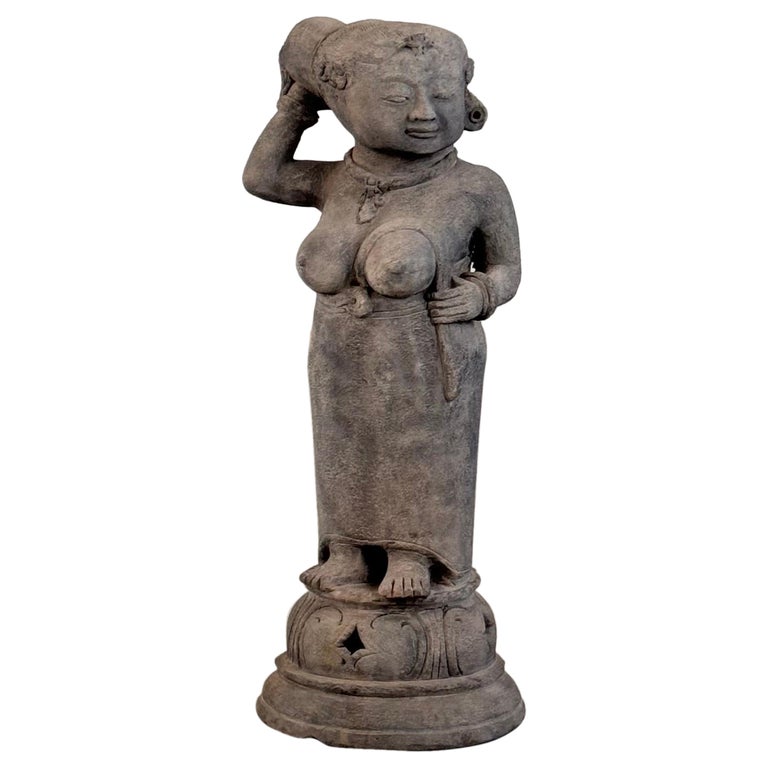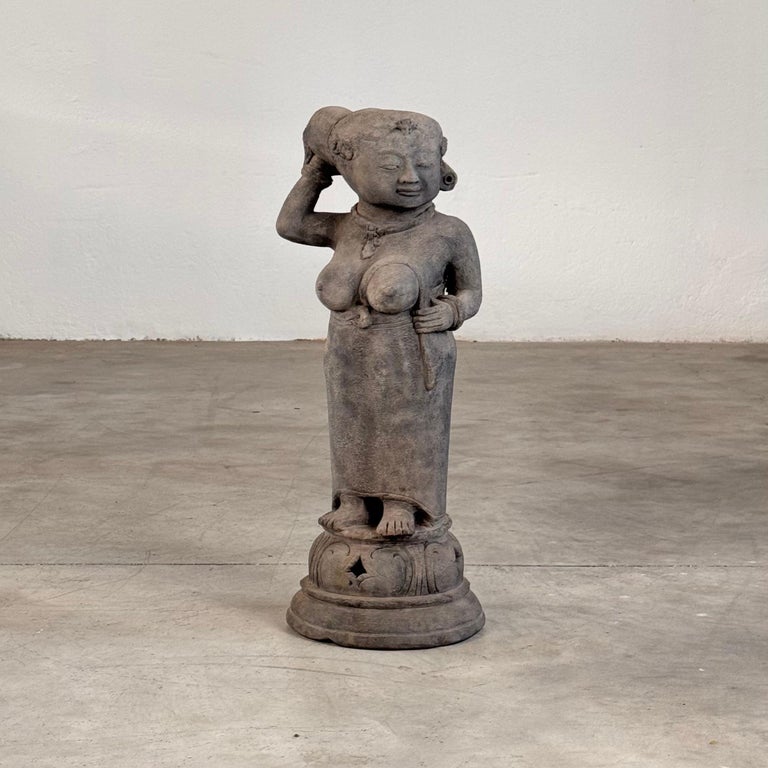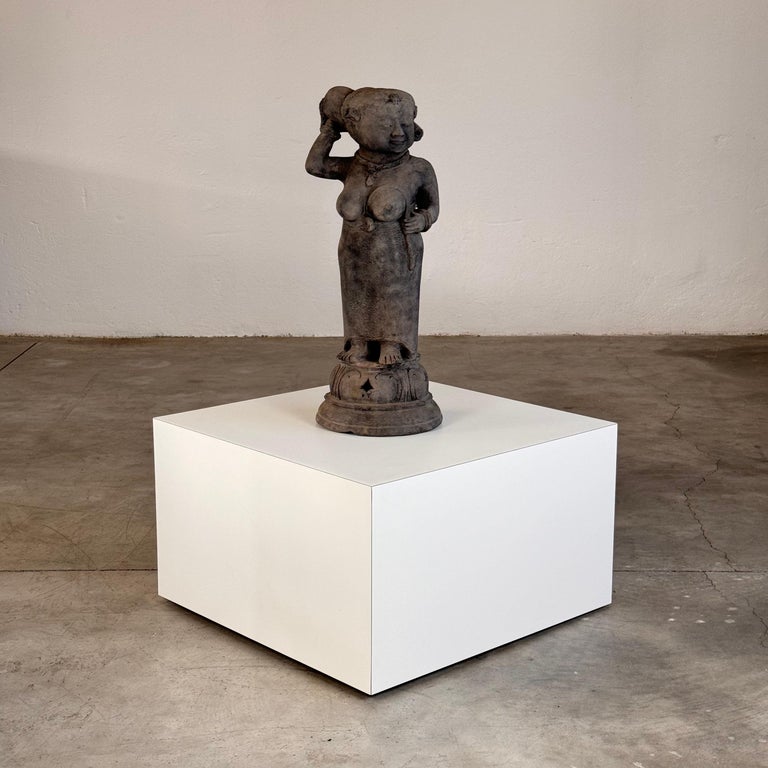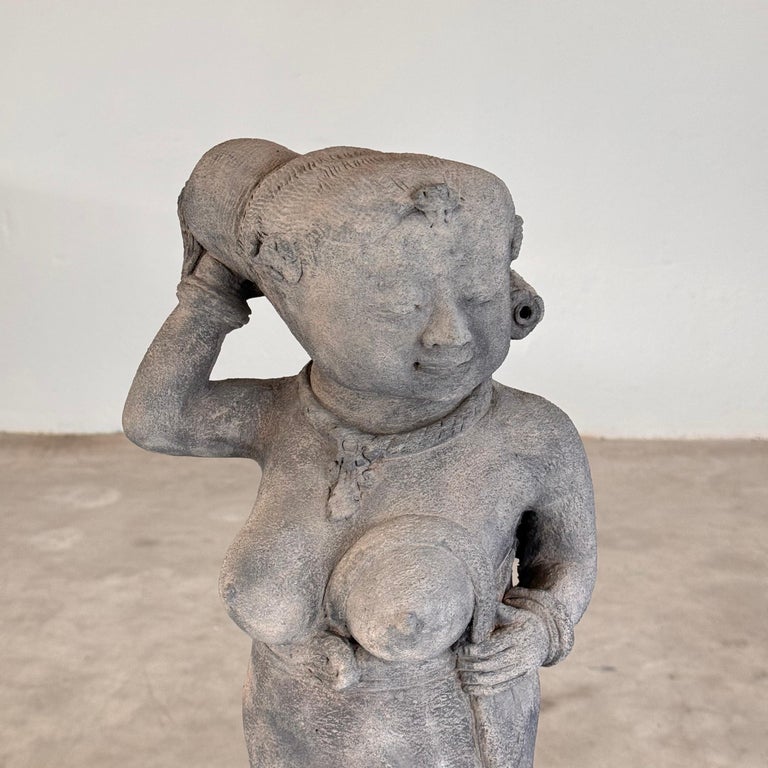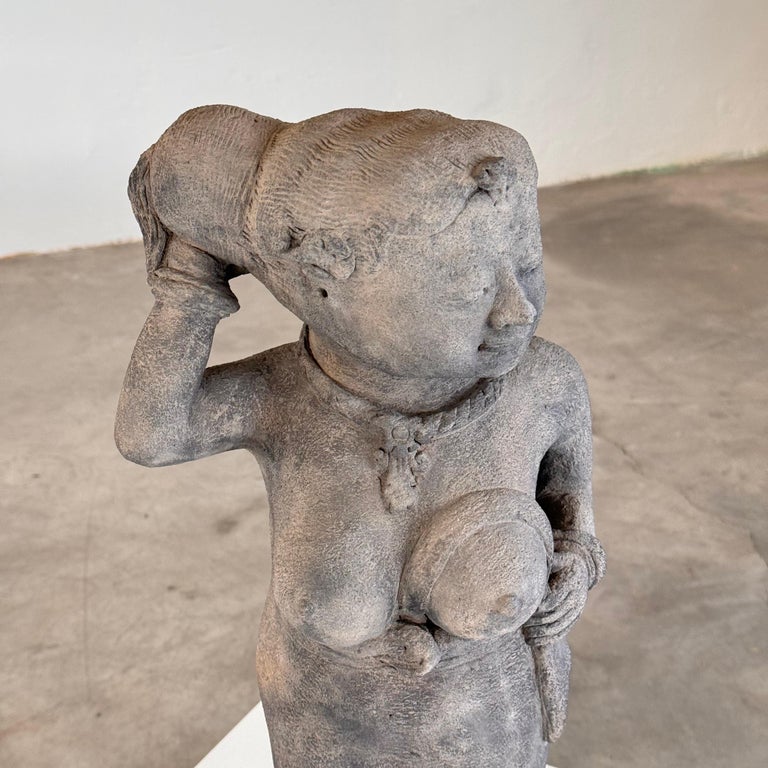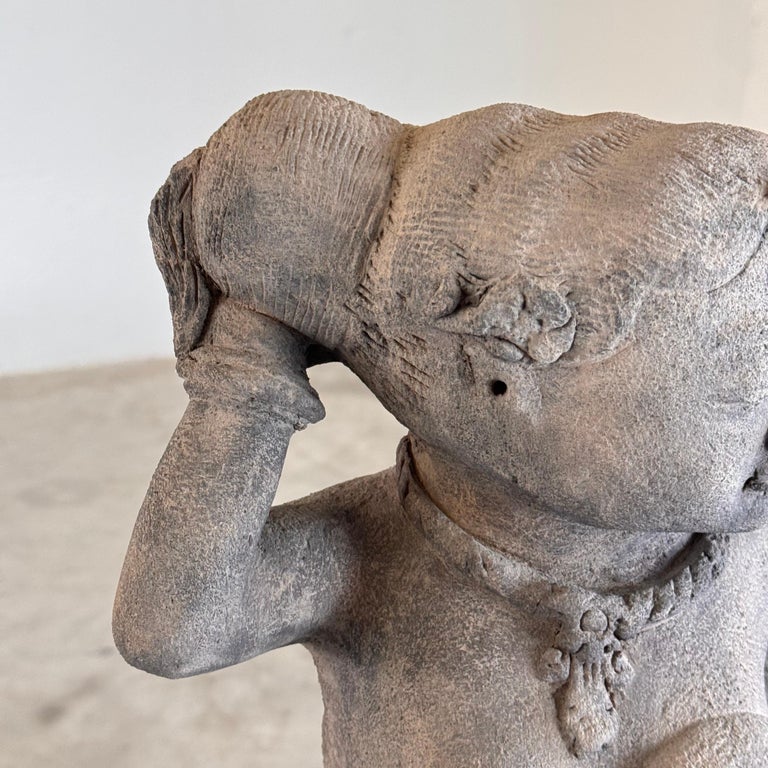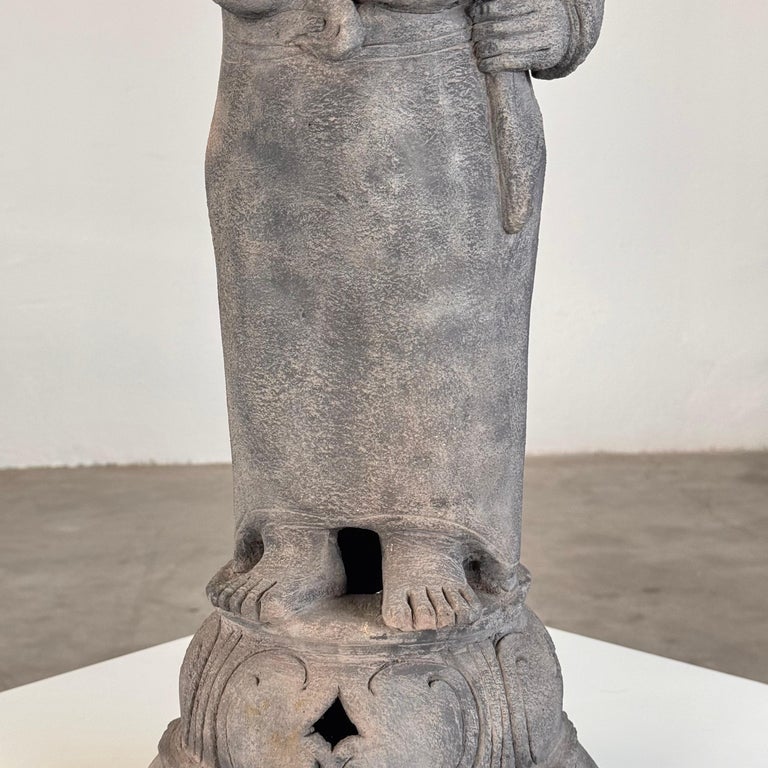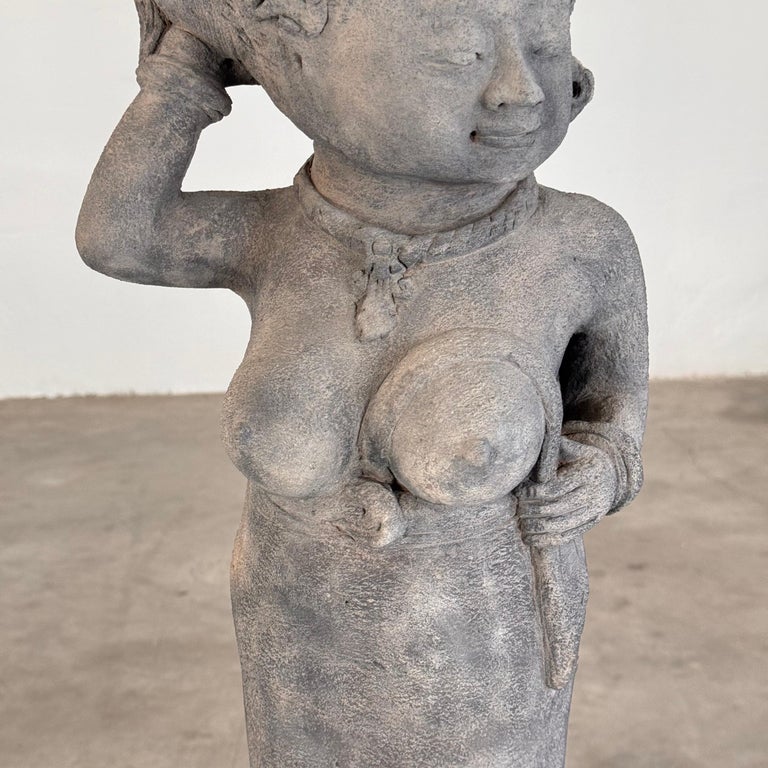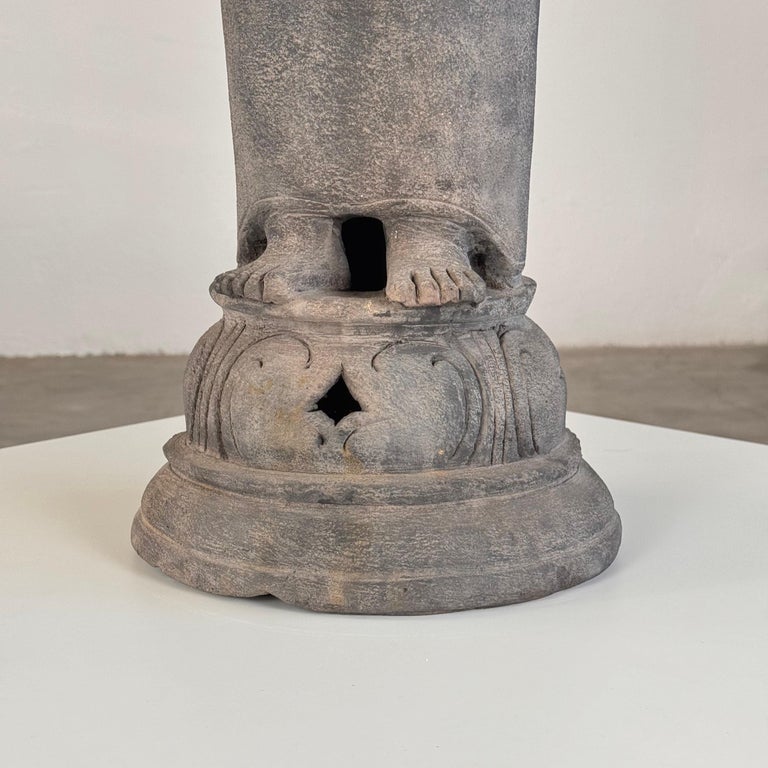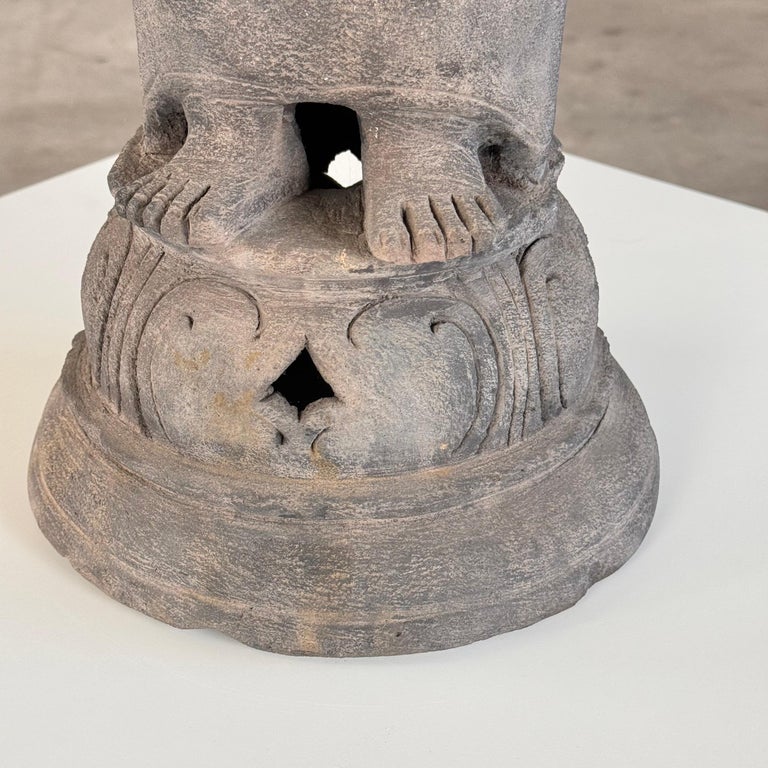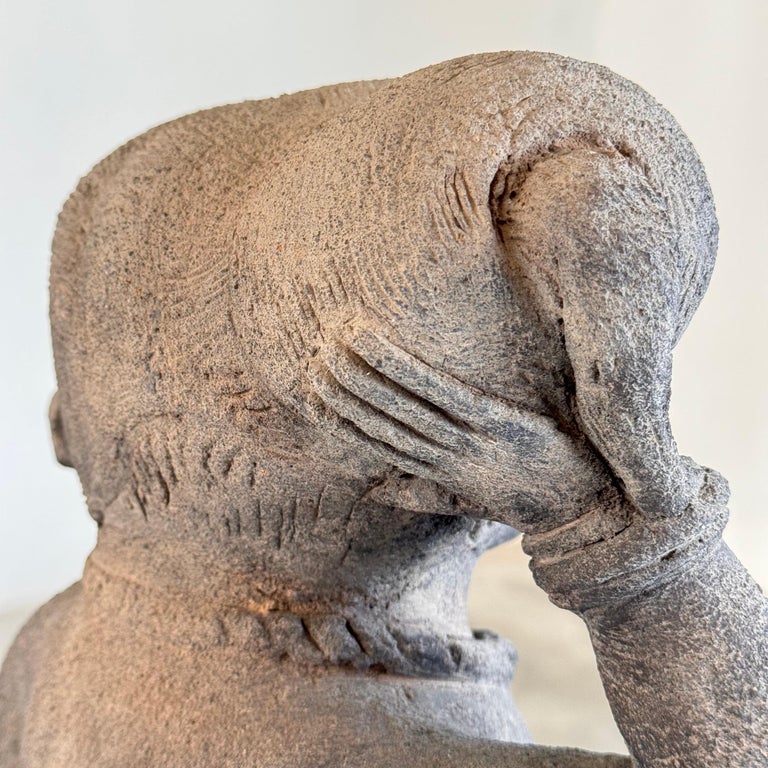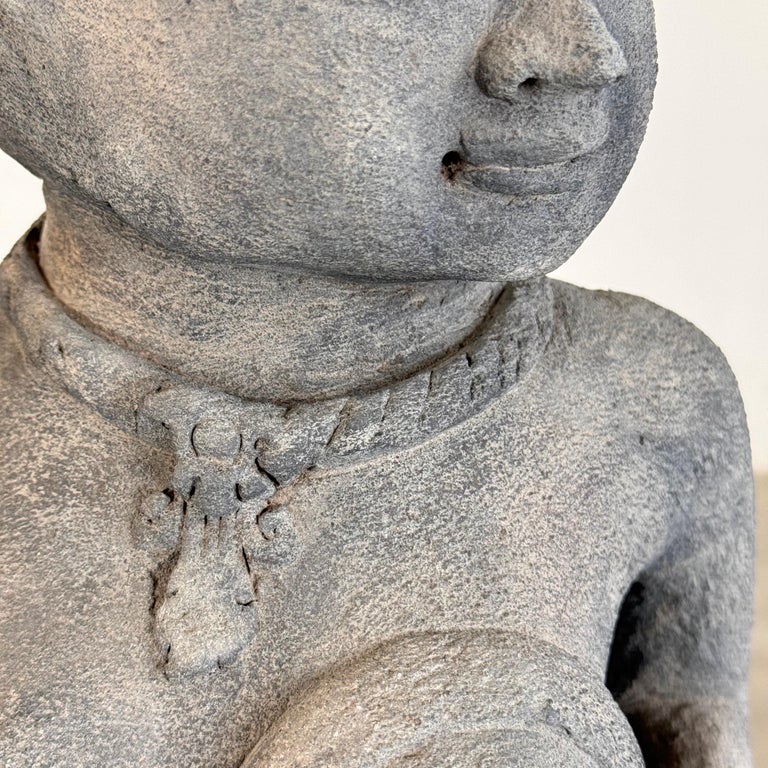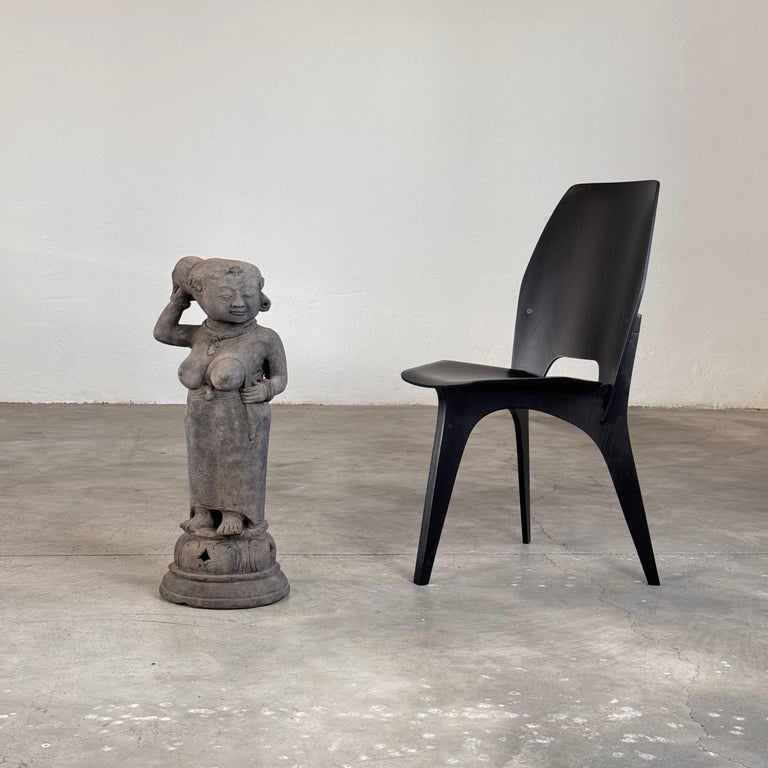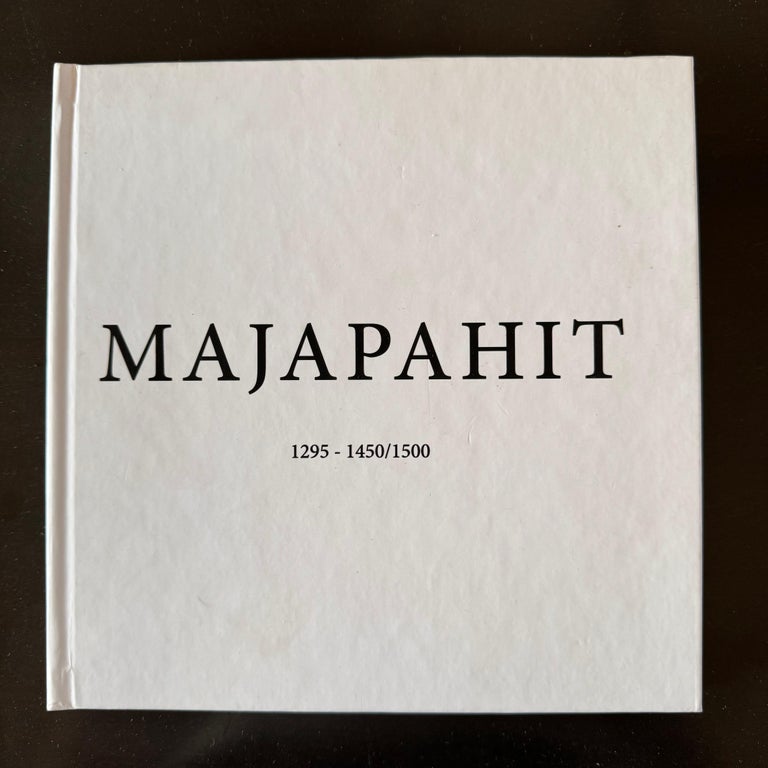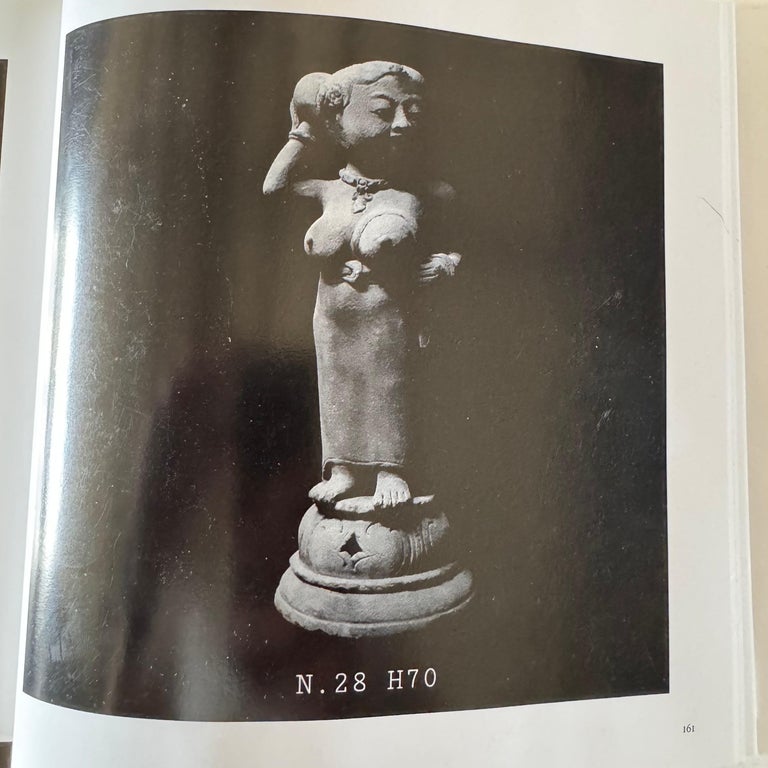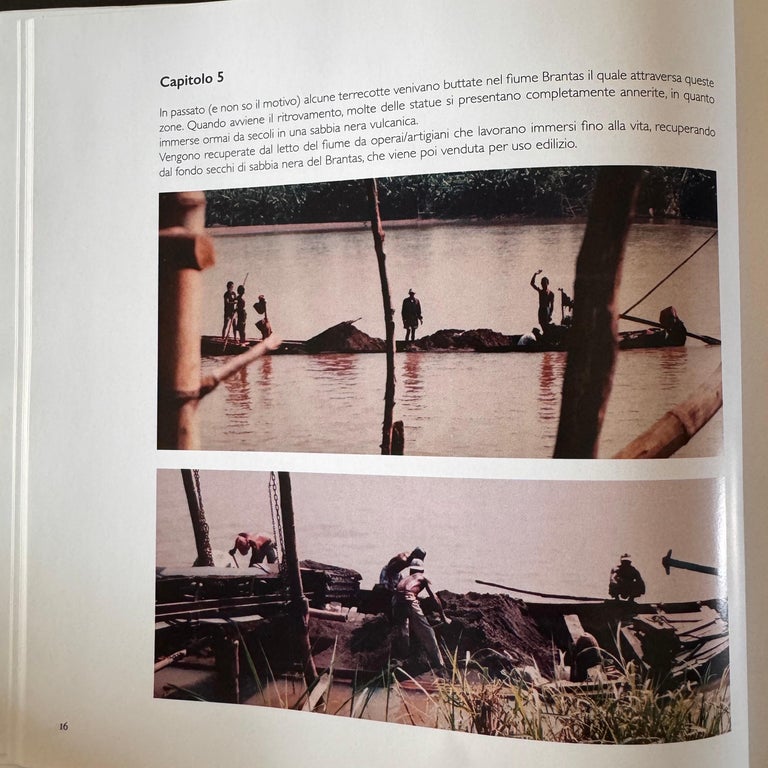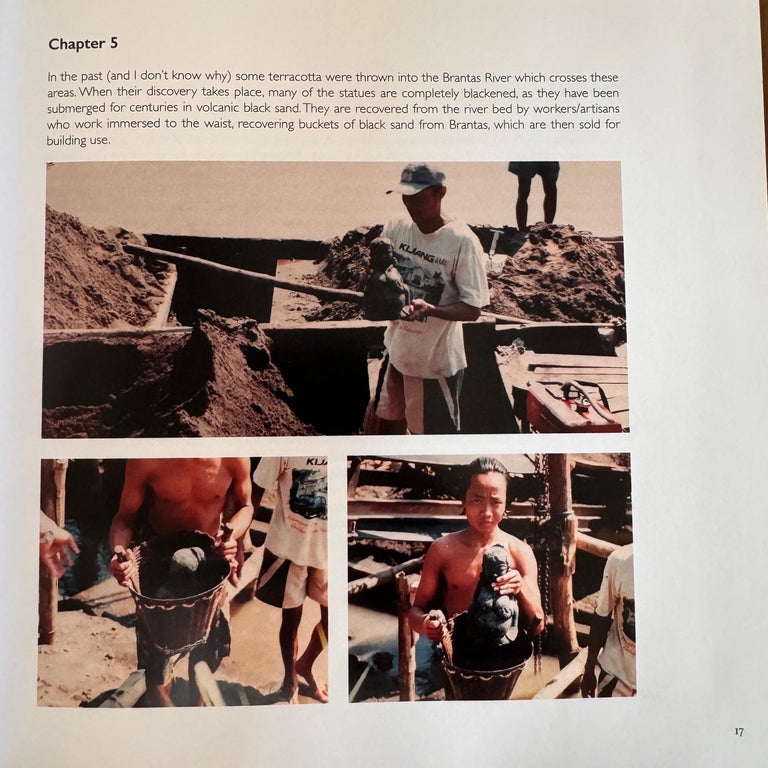Description
The sculpture captures a moment of serene grace, as the woman delicately holds her hair with her right hand, exuding an air of elegance rarely found in similar works. What makes this piece particularly unique is its unusual coloration: unlike most terracotta figures, which typically exhibit reddish-brown tones, this figure has darkened over time to a striking grey-black-brown hue. This transformation occurred due to centuries of submersion in the mud of the Brantas River, where the natural elements enriched the statue with its distinct coloration (refer to the photos of discoveries during the extraction of other statues, as seen on pages 16-17 of the catalog).
Originating from the Trowulan region in East Java, this handmaiden figure is documented on page 161 as figure number 28 in the Majapahit catalog and stands as a rare example of terracotta craftsmanship from this ancient civilization. The piece has been carefully studied and authenticated by Professor Agus Aris Munandar, a distinguished scholar in Indonesian archaeology.
Professor Munandar, born in 1959, is currently the professor of Indonesian Archaeology at the University of Indonesia in Jakarta. His extensive research focuses on Hindu-Buddhist archaeology, iconography, and the ancient history of Indonesia and Southeast Asia. He served as a member of the Indonesian team of experts at National Cultural Heritage from 2015 to 2018 and previously held the role of Head of Institute and Research at the Faculty of Humanities at the University of Indonesia. Now the head of the Department of Archaeology at the University of Indonesia, Professor Munandar has authored numerous articles and 19 books, many of which delve into Majapahit culture and artifacts, solidifying his reputation as a leading scholar in the field.
This extraordinary figure is accompanied by a preface from Professor Massimo Vidale of the University of Padua, who offers invaluable insights into the significance of Majapahit terracotta artifacts. Professor Vidale, an expert in archaeological research methodology and oriental archaeology, has led multiple expeditions across the Near East, Central Asia, and North Africa, and his contributions to Majapahit studies enrich our understanding of these rare pieces.
Standing at 70 cm in height and 28 cm in diameter, this majestic sculpture has undergone careful conservation to ensure its enduring beauty. It includes a certificate of authenticity attesting to its provenance and historical importance. Whether displayed as a centerpiece in an elegant modern interior or honored in a museum collection, this rare terracotta masterpiece is sure to captivate with its timeless allure and extraordinary story.
